12 Wild Animals in Nigeria [Wildlife in Nigeria]
Want to know more about the wildlife in Nigeria?
Discover 12 wild animals in Nigeria in this post, as well as interesting facts about them. 🇳🇬
Learn All About Nigerian Animals
Ready to learn all about Nigerian animals?
I’ve always been fascinated by animals and by how they can be so different from one country to another. In this guide, we’ll focus on the many animals Nigeria has on the land, in the sky, and underwater.
I’ve split the guide into 6 categories:
- Native animals from Nigeria
- Endangered animals of Nigeria
- What is Nigeria national animal?
- How many animals native to Nigeria?
- What animals live only in Nigeria?
- Are wolves in Nigeria?
Let’s dive in right away with our first category!
Native Animals from Nigeria
Nigeria is an African country located in the western part of the continent, next to the Atlantic Ocean. It is the most populous country in the continent, is home to more than 250 ethnic groups which speak more than 500 languages, is an important power in Africa and an emerging one on a global scale, and used to be a British colony. It is bordered by Niger, Chad, Benin, and Cameroon, and although its largest city is Lagos, its capital city is Abuja, which counts more than 1,235,000 inhabitants (but more than 6,000,000 if you include the metropolitan area).
An interesting part of the country that I wanted to tackle is its wildlife. In light of that, I have listed the best of it, and I hope you will love learning what animals live in Nigeria.
Here’s the Nigeria animals list.
1. Cross River gorilla
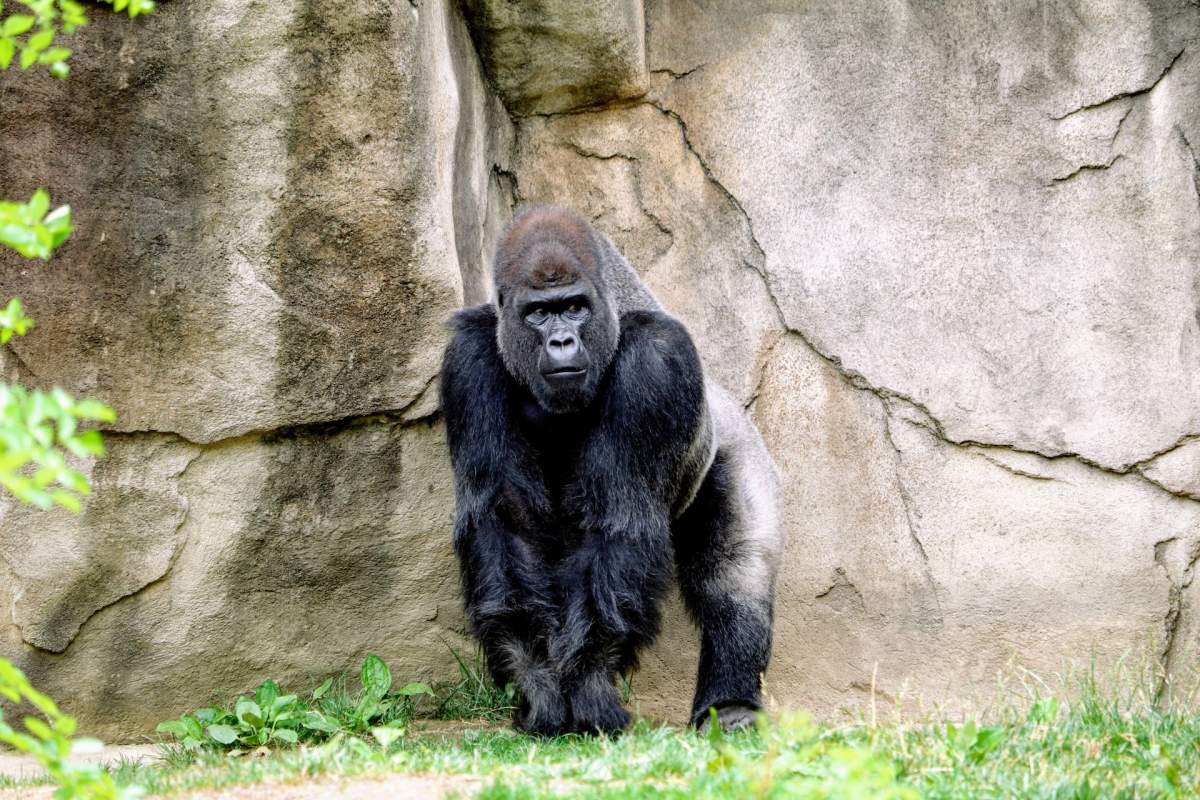
- Name: Cross River gorilla
- Scientific name: Gorilla gorilla diehli
- Conservation status:
Alongside the western lowland gorilla, the Cross River gorilla is a subspecies of the western gorilla, and one of the rarest primates in the world, with only 250 to 300 individuals remaining in the wild, the main reasons for that being habitat fragmentation, habitat loss, and bushmeat hunting.
This gorilla can be found around the border between Cameroon and Nigeria and inhabits subtropical and tropical moist broadleaf forests.
2. Aardvark
- Name: Aardvark
- Scientific name: Orycteropus afer
- Conservation status:
The aardvark is a peculiar, medium-sized species of nocturnal mammal native to all of sub-Saharan Africa. It is characterized by its unique, slender pig-like snout and it is an insectivorous animal that feeds on ants and termites; in order to find them, it uses its powerful legs and claws and crushes the termite hills open.
This unique animal is closely related to the manatees, the hyraxes, and the elephants, and although its numbers are declining, it is considered of least concern for now.
3. Nolan warthog
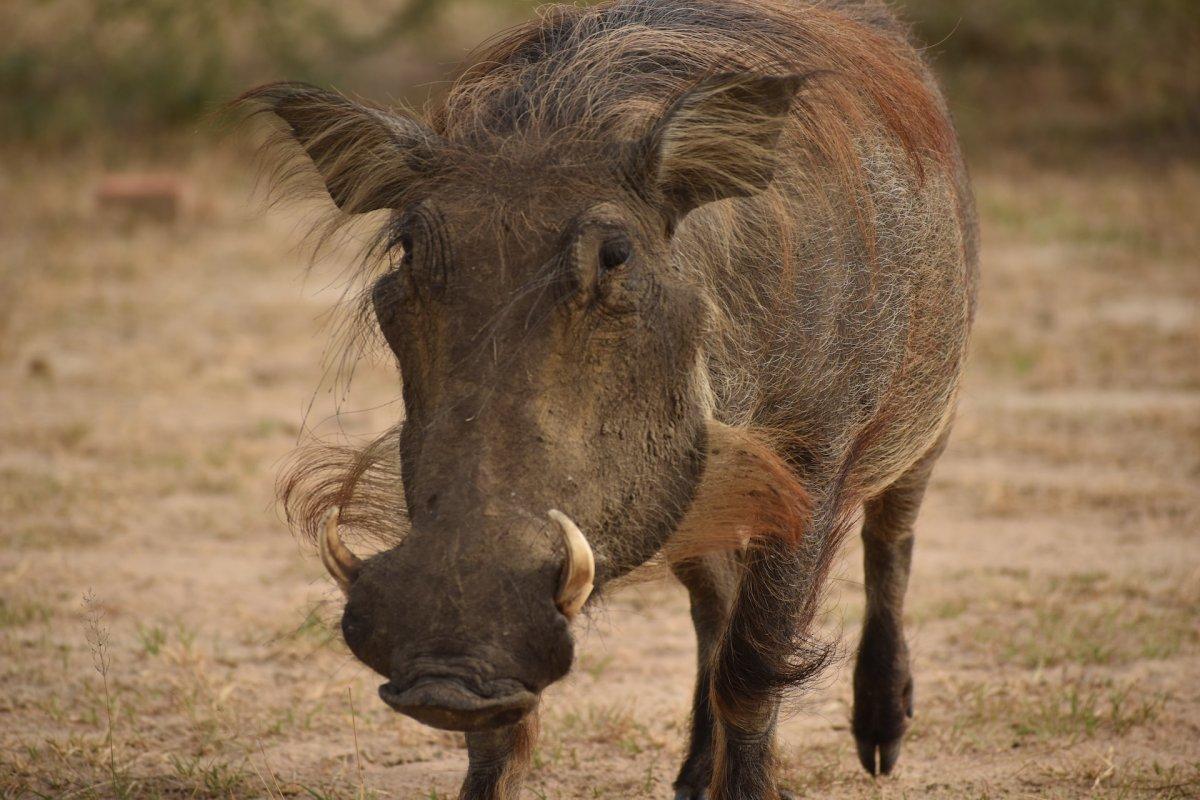
- Name: Nolan warthog
- Scientific name: Phacochoerus africanus africanus
- Conservation status:
The Nolan warthog is the subspecies of the common warthog native to Nigeria and the rest of Central, East, and West Africa. The warthog is the only species of wild pig adapted to living in the savanna, and it is particularly opportunistic and will feed on anything it can find, even carrion.
This animal is one of the most widespread and common ones in sub-Saharan Africa, and although quick to run when threatened, it can be a fierce opponent if cornered.
4. Chimpanzee

- Name: Chimpanzee
- Scientific name: Pan troglodytes
- Conservation status:
The chimpanzee, informally known as the chimp, is a species of great ape native to tropical Africa. It inhabits savannas and forests and is one of our closest relatives alongside the bonobo.
The local subpopulation of the chimpanzee in Nigeria is known as the Nigeria-Cameroon chimpanzee, and it lives in the forested areas of the border between the two countries; there are about 6,000 to 9,000 primates there.
5. West African giraffe
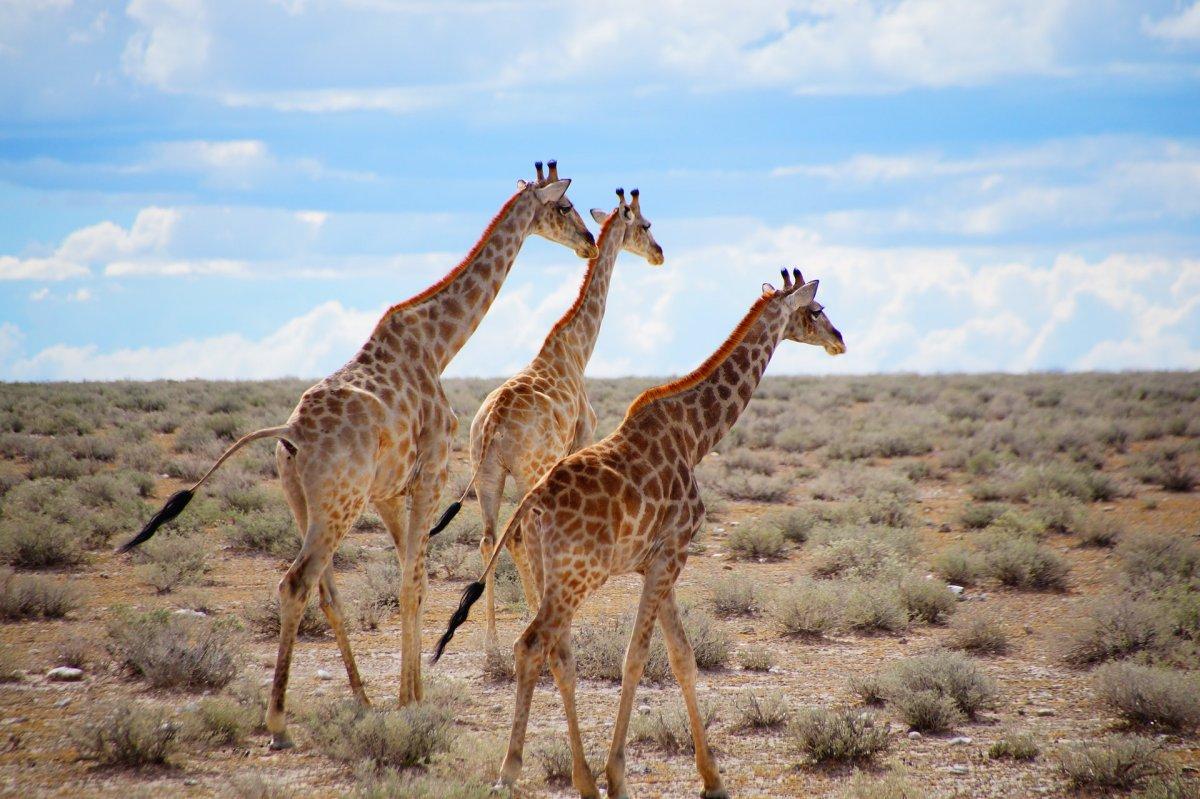
- Name: West African giraffe
- Scientific name: Giraffa camelopardalis peralta
- Conservation status:
The West African giraffe, also known as the Niger giraffe or the Nigerien giraffe (not to be confused with the country of Nigeria and its inhabitants, the Nigerians), is a subspecies of the African giraffe native to the Sahel regions of West Africa.
This giraffe can be found in the northern parts of Nigeria, where it feeds on leaves. There were only 49 individuals left in the middle of the 1990s in their entire range, but thanks to protection and conservation efforts, these numbers have risen to 600 now.
6. African bush elephant
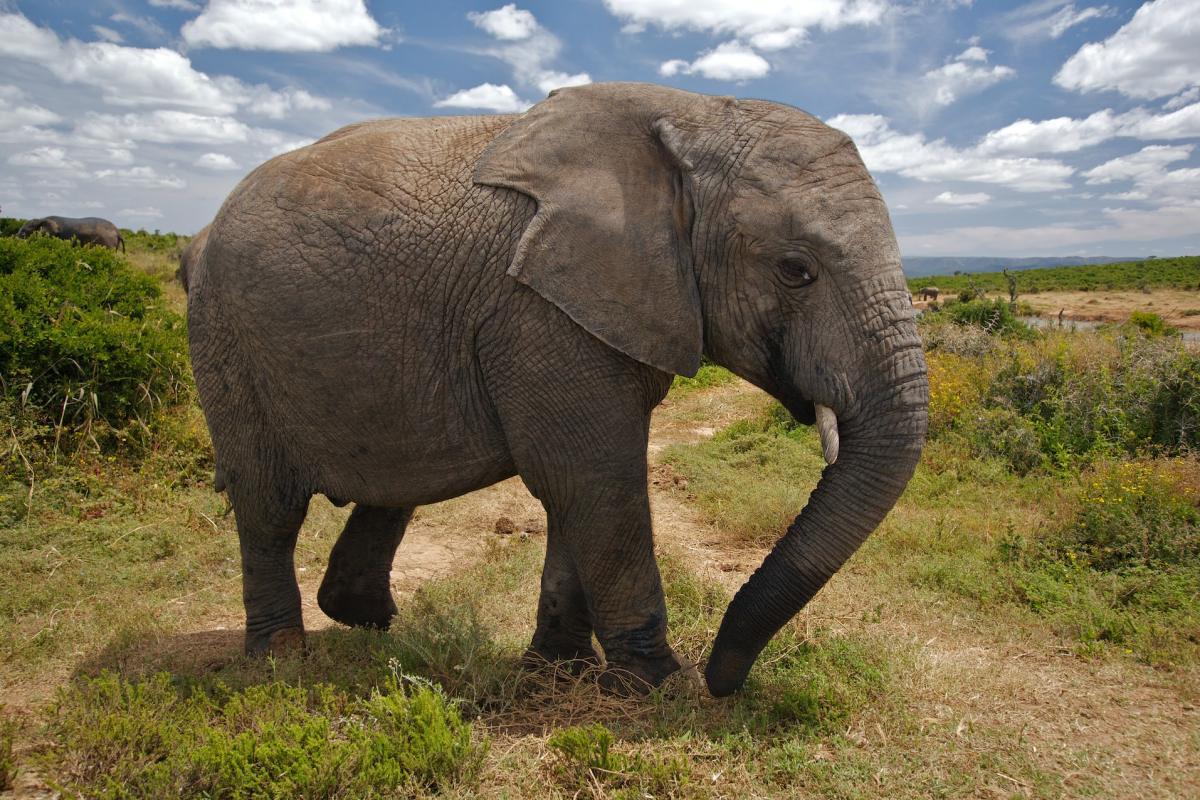
- Name: African bush elephant
- Scientific name: Loxodonta africana
- Conservation status:
The African bush elephant, also known as the African savanna elephant, is the largest terrestrial animal in the world, and one of two African elephant species. While its range used to be wider and more uniform, it can now only be found in scattered populations across sub-Saharan Africa, mainly due to civil wars, habitat loss, and poaching.
This elephant is a herbivore that lives either alone, in all-male groups, or in large groups made of cows and their offspring. In Nigeria, it can be found in the central and eastern parts of the country.
7. West African lion
- Name: West African lion
- Scientific name: Panthera leo leo
- Conservation status:
The West African lion is the subspecies of the African lion native to the northern and western parts of the continent. It is one of the main emblems of Africa as a whole but is now restricted to small, scattered populations.
Some of its last populations are located in Nigeria (namely in the Kainji National Park and the Yankari National Park), and the range of this species has declined by 99 percent over the centuries.
8. African leopard
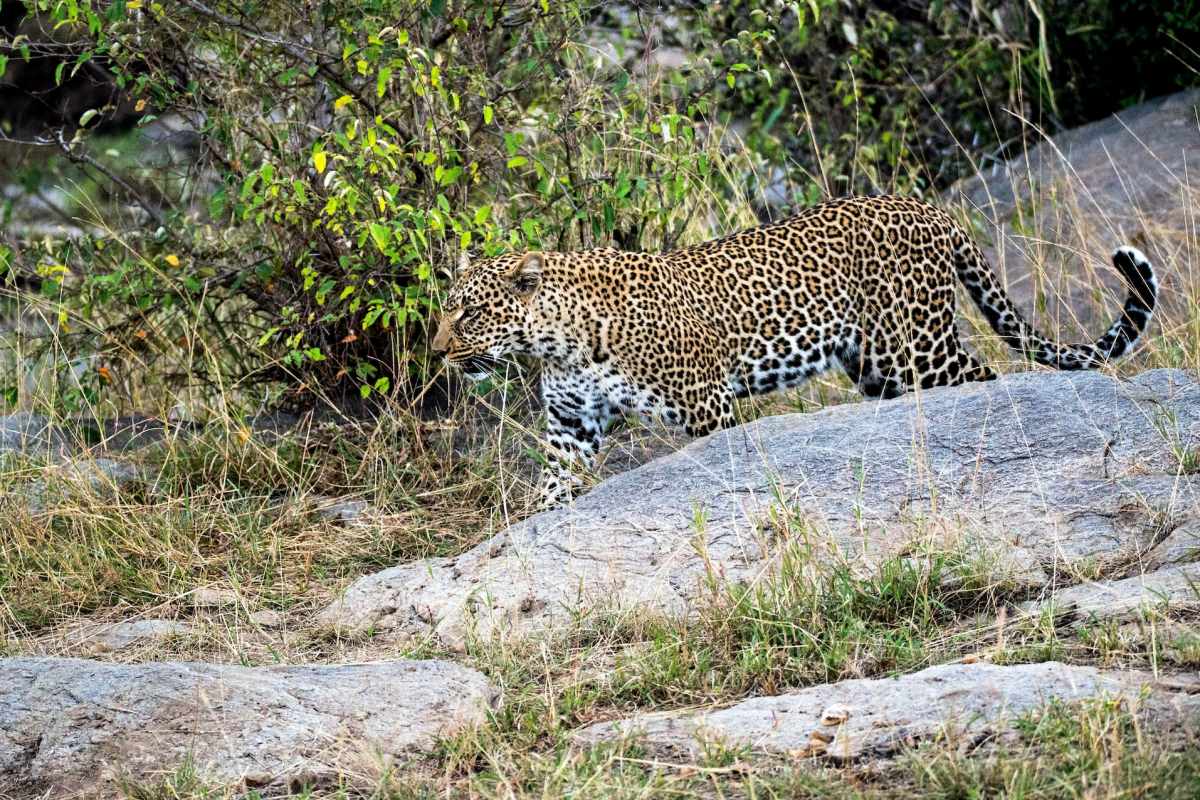
- Name: African leopard
- Scientific name: Panthera pardus pardus
- Conservation status:
The African leopard is another species of large wild cat native to Africa. Very similar to the West African lion, its range has shrunk over the years, it is listed as vulnerable to extinction and it is killed for its beautiful coat.
This leopard lives in the rainforests, grasslands, and savannas of sub-Saharan Africa, and some specimens were also recorded in North Africa, at elevations between 300 and 2,500 m / 980 and 8,200 ft.
9. Waterbuck
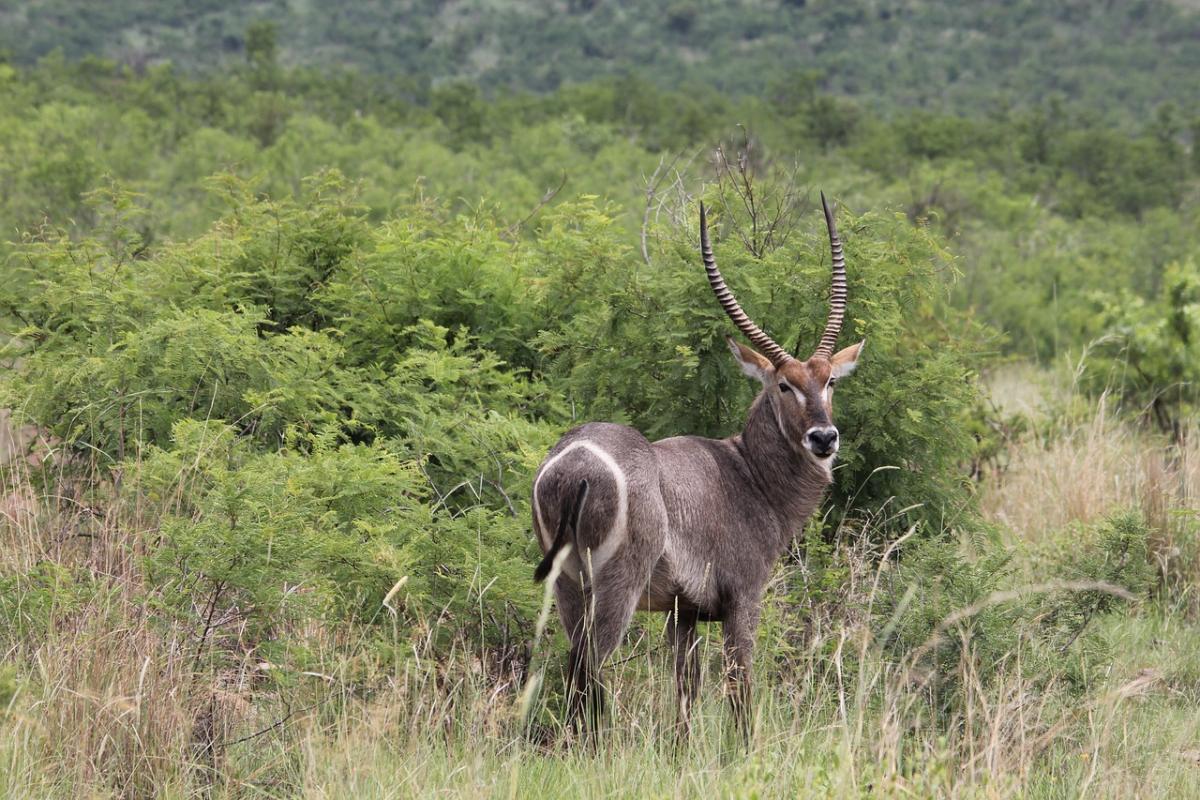
- Name: Waterbuck
- Scientific name: Kobus ellipsiprymnus
- Conservation status:
The waterbuck is a large species of antelope native to much of sub-Saharan Africa. Thanks to this wide range and large numbers, it is listed as least concern, although its population trend is downwards, primarily because of human disturbance and poaching.
The Nigerian population of the waterbuck is pretty small. This antelope gathers in groups of up to 30 individuals, in either all-male or nursery gatherings.
10. Red river hog
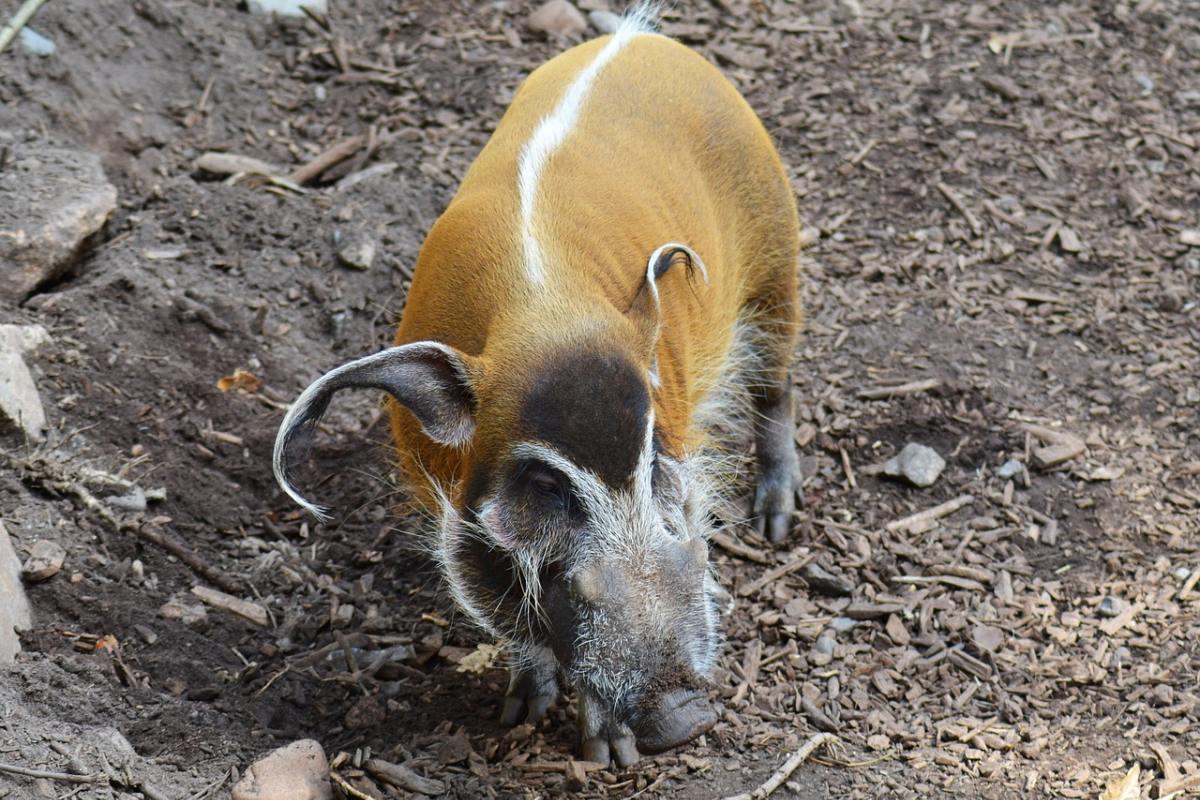
- Name: Red river hog
- Scientific name: Potamochoerus porcus
- Conservation status:
The red river hog, also known as the bushpig, is a species of wild pig native to Africa, primarily in Guinea and Congo. It inhabits forests, rainforests, and swamps, and usually stays near bodies of water.
This wild pig has striking reddish-brown or orange fur, and tufted ears. It is sometimes active during the day, but is mainly crepuscular and nocturnal, and lives in groups made of a single male, its several females and their offspring, or about 6 to 10 individuals.
11. Hippopotamus
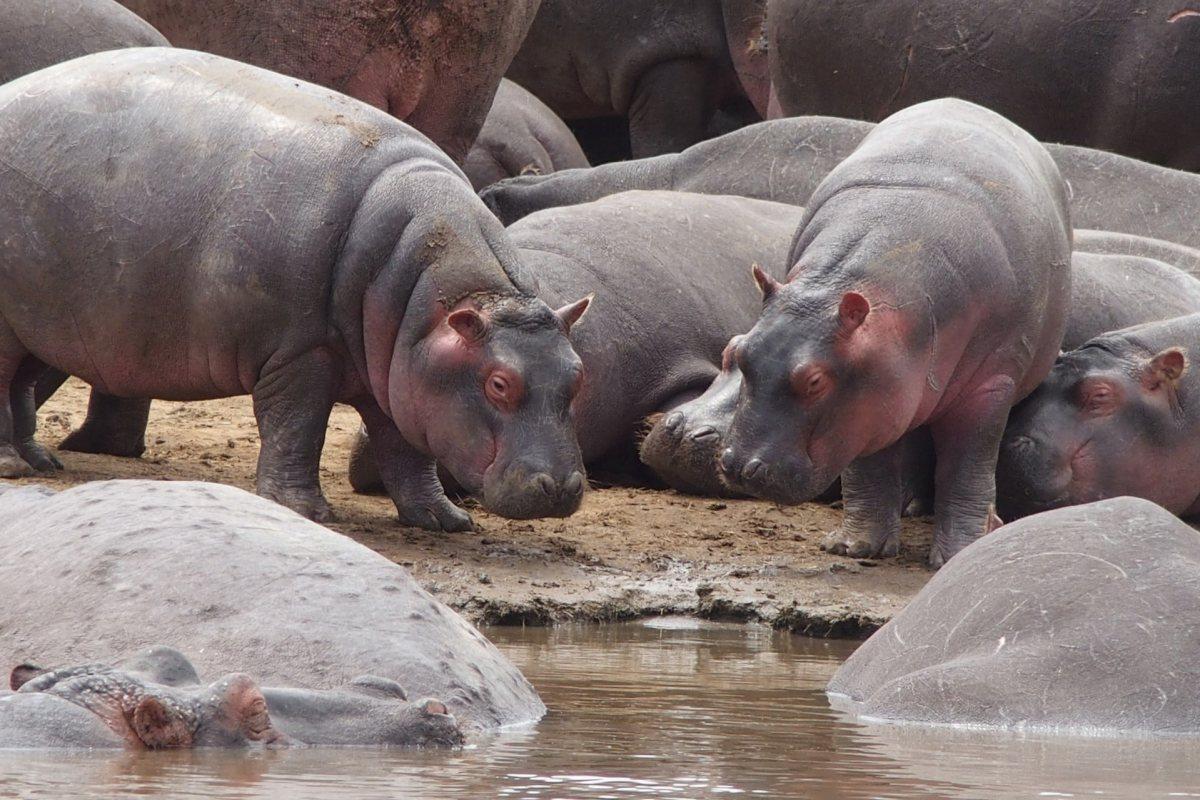
- Name: Hippopotamus
- Scientific name: Hippopotamus amphibius
- Conservation status:
The hippopotamus, also known as the common hippopotamus, the river hippopotamus, or simply the hippo, is a large species of semi-aquatic mammal native to sub-Saharan Africa. Its populations are scattered across the country, but its range used to be extremely wide.
Despite its considerable bulk, the hippopotamus can run incredibly fast, reaching speeds of up to 30 km/h / 19 mph. On top of that, it is particularly dangerous, and one of the most renowned man-killers in the whole continent of Africa.
12. Spotted hyena
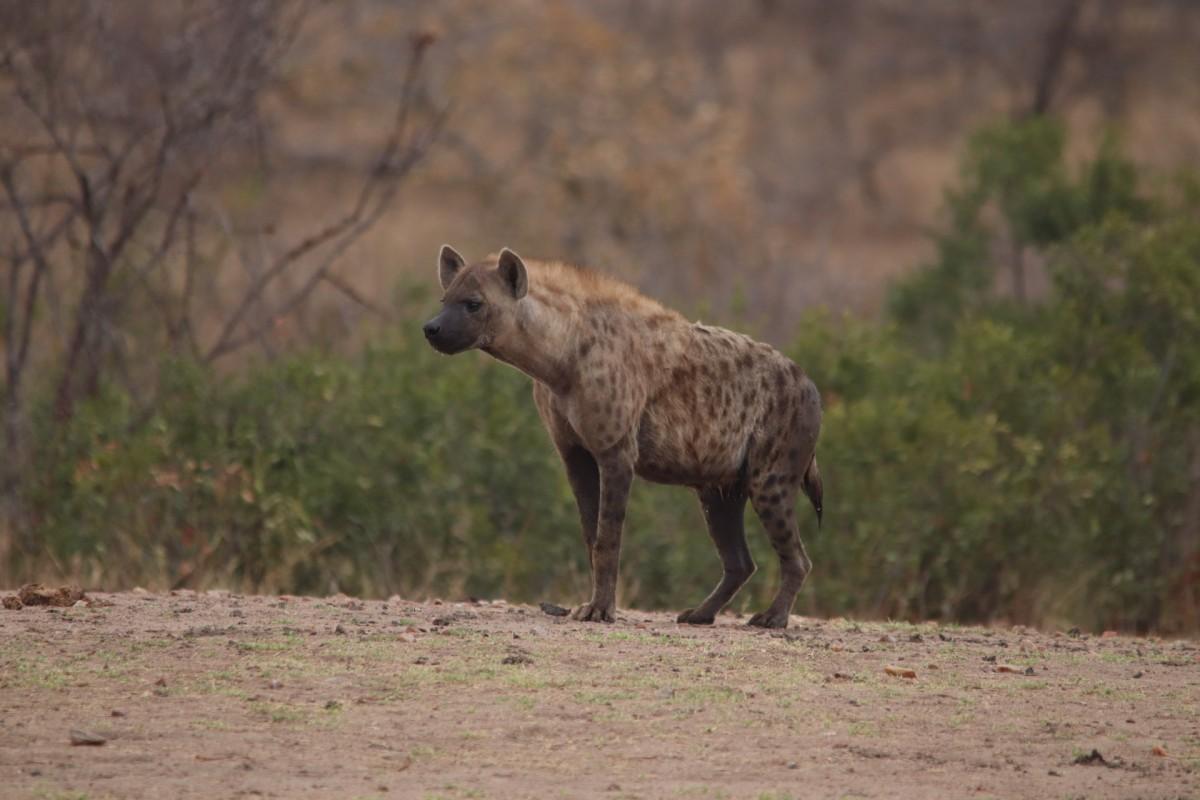
- Name: Spotted hyena
- Scientific name: Crocuta crocuta
- Conservation status:
The spotted hyena, widely known as the laughing hyena for its very particular calls, is a large species of carnivore native to Africa. It is the most successful terrestrial carnivore on the continent, being found in large numbers, in a wide range, and capable of adaptation in terms of habitat and diet.
The particularly opportunistic spotted hyena is on the verge of extinction in Nigeria, where only about 100 individuals remain. Because of a lack of legal protection, it is persecuted by local inhabitants.
—
So there you have them, these were my 12 animals that live in Nigeria. I hope you enjoyed this list and that you learned something new today.
In case you want to learn more about Nigeria wildlife, feel free to keep reading, as I still have lots of things to tell you about:
Endangered Animals of Nigeria
This is definitely the saddest part of the list, but it is essential to raise awareness. Because of this, let’s go through the list of endangered animals in Nigeria.
Here are the animals in danger of extinction in Nigeria.
- Scimitar-horned oryx
- Slender-snouted crocodile
- Western gorilla
- Preuss’s red colobus
- Home’s hinge-back tortoise
- Black rhino
- and 43 more…
- African spurred tortoise
- Chimpanzee
- African savanna elephant
- Pygmy hippopotamus
- Gray parrot
- and 69 more…
To see the full list of endangered species in Nigeria, head over to the International Union for Conservation of Nature’s Red List.
What is the National Animal of Nigeria?
The national animal of Nigeria is the eagle.
There are many different species of eagles in the world, I will give you that. However, they all represent the same ideas: freedom, strength, and power, and they are used to represent a lot of countries in the world such as the United States and Germany.
The eagle is featured on Nigeria’s coat of arms, where it stands as a symbol of fertility and rich soil.
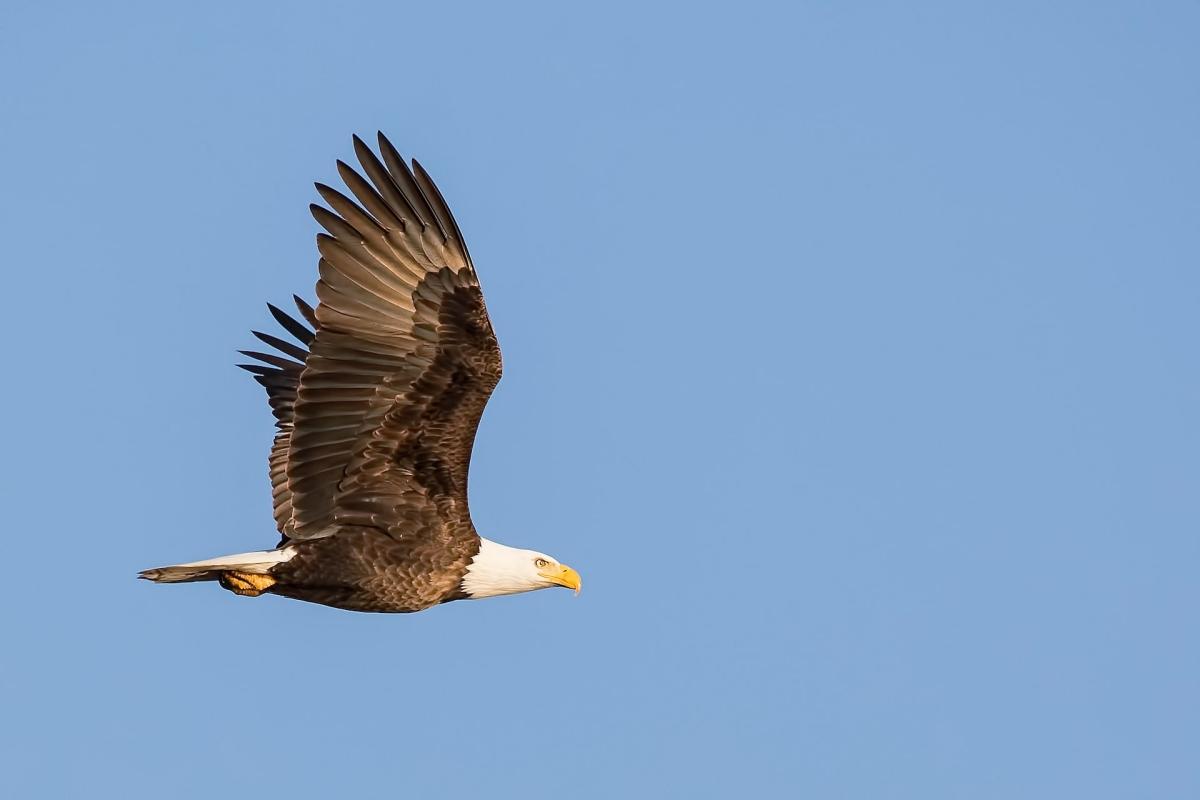
How Many Animals Native to Nigeria?
What is the diversity of native animals in Nigeria?
Let’s look at the total number of species of Chordata (mammals, birds, fishes, and reptiles).
Total number of animal species in Nigeria: 2,700 (14,205 in total in sub-Saharan Africa)
What animals live only in Nigeria?
There are quite a few animals endemic to the country of Nigeria.
Some examples are the Delta Red colobus monkey, the savanna swamp shrew, the rock firefinch, the anambra waxbill, the West African worm lizard, the Nigerian toad, the Danko puddle frog, the Dunger’s file snake, the giant forest gecko, and the forest shrew.
Are wolves in Nigeria?
Yes, there are some wolves in Nigeria, in the form of the African wolf.
The African wolf is a subspecies of the gray wolf native to West Africa, North Africa, Northeast Africa, the Sahel, and the Horn of Africa. It is a predator which feeds on mammals as large as gazelle fawns, and invertebrates as small as insects. In some African cultures, it plays a very important role in local folklore and tales, while in some others it is considered untrustworthy, and its body parts are used for medicinal and ritualistic purposes.
More About Animals in the World!
Loved these facts about the wildlife of Nigeria? Want to see what animals live in other countries?
Then check out these posts:
Or click here to see ALL the facts up on the blog! Spoiler alert: there’s A LOT of them.
Share the knowledge! Click on the buttons below to share information about these wild animals found in Nigeria with your friends, and help them learn more about the world 🙂
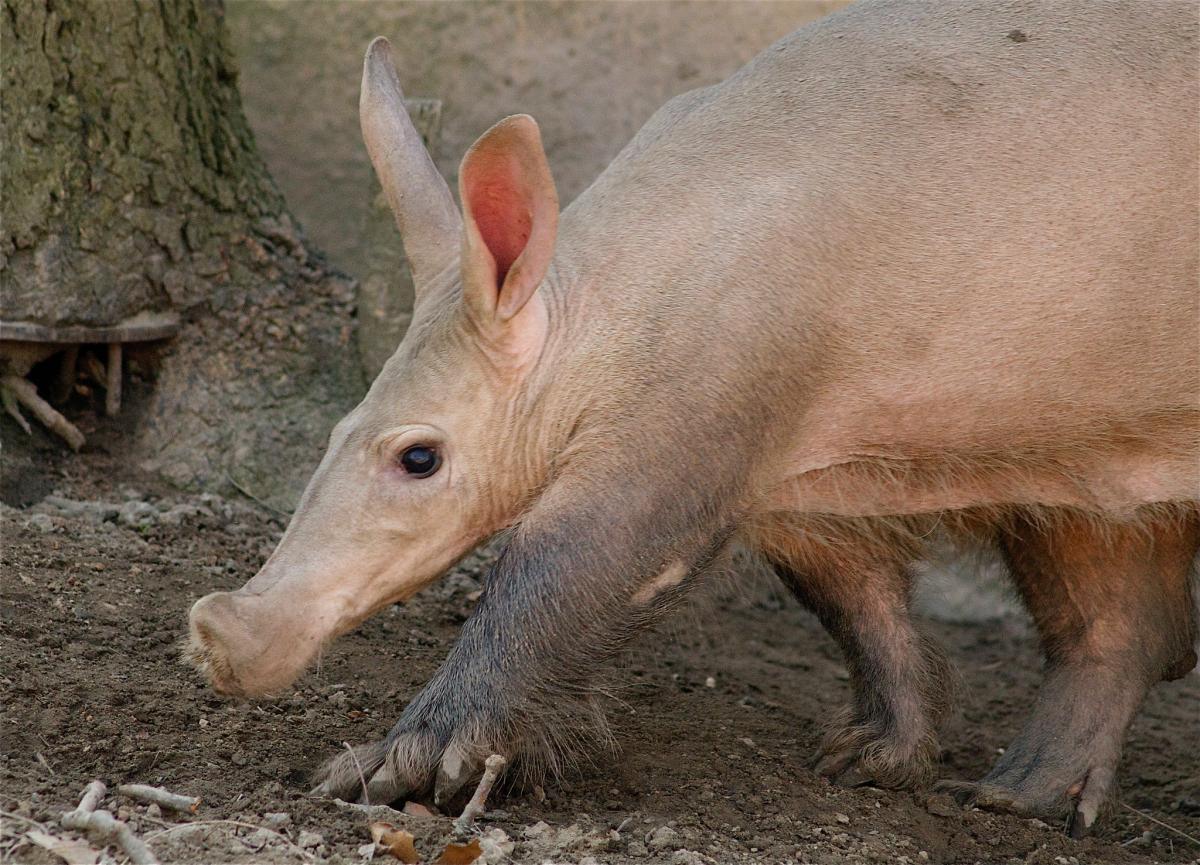
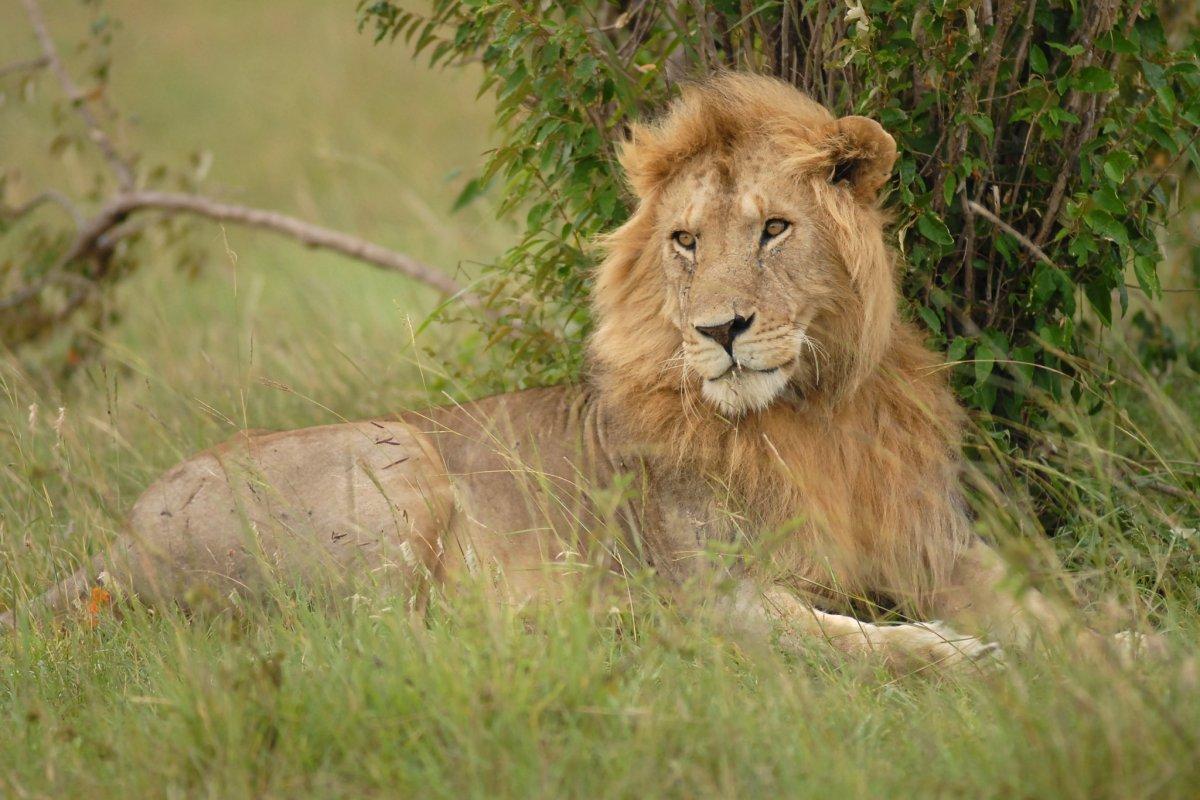

![23 Wild Animals in Turkey [Wildlife in Turkey]](https://www.kevmrc.com/wp-content/uploads/2022/12/23-wild-animals-in-turkey.jpg)
![21 Wild Animals in Montenegro [Wildlife in Montenegro]](https://www.kevmrc.com/wp-content/uploads/2022/06/21-wild-animals-in-montenegro.jpg)
![12 Wild Animals in Mongolia [Wildlife in Mongolia]](https://www.kevmrc.com/wp-content/uploads/2022/12/12-wild-animals-in-mongolia.jpg)